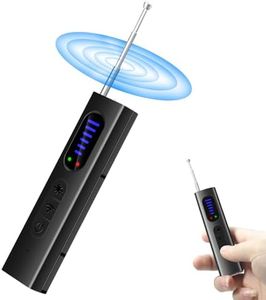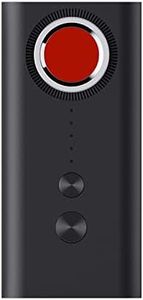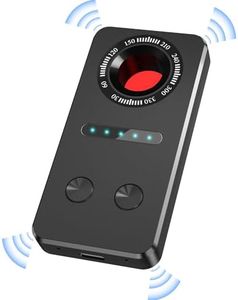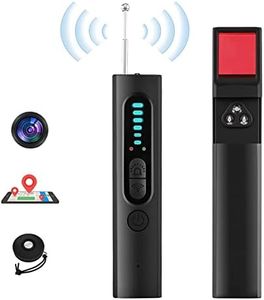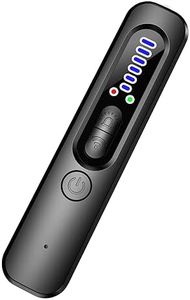We Use CookiesWe use cookies to enhance the security, performance,
functionality and for analytical and promotional activities. By continuing to browse this site you
are agreeing to our privacy policy
10 Best Hidden Camera Detectors
From leading brands and best sellers available on the web.Buying Guide for the Best Hidden Camera Detectors
Choosing a hidden camera detector can feel a bit overwhelming if you’ve never shopped for one before. These devices help detect hidden surveillance devices in your environment, such as discreet cameras in rented rooms, bathrooms, or meeting spaces. The right detector should offer confidence and ease of use, while covering the areas and camera types you’re most concerned about. Understanding the key specifications and how they relate to your needs can help make the process much easier.Detection MethodsThis refers to the different ways a detector can find hidden cameras. The two most common methods are lens detection (finding the camera lens through reflected light) and RF (radio frequency) detection (detecting wireless transmission signals). Some detectors also find wired cameras or support infrared detection. Lens detection works best for visually spotting a camera, and you’ll look through the detector for a telltale reflection. RF detection scans for signals emitted by wireless devices. If you’re mainly concerned about wireless cameras, RF is important. If you want to check for cameras that are not transmitting, lens detection is key. Many users benefit from a device that combines both for comprehensive coverage.
Detection RangeDetection range tells you how far the detector can sense a camera or signal. For RF detection, this range is usually expressed in meters and shows how close you need to be to the potential threat. Short-range devices (up to 5 meters) require you to be near the target, which is suitable for scanning specific rooms or objects. Mid-range detectors (5–15 meters) let you sweep larger spaces. If you’re searching bigger areas or want to cover more ground without moving much, opt for a longer range. For most personal use in rental rooms or offices, a mid-range detection is usually enough.
Frequency RangeFrequency range is important for RF detection—this tells you which radio frequencies the device can detect. Most hidden cameras transmit within certain frequency ranges, and a wider range ensures you can pick up more devices. Basic models may only cover specific frequencies common to off-the-shelf cameras, while more advanced ones scan a broader band and detect unconventional or newer devices. If you know you’ll encounter standard spy cameras, a limited range is fine. If you’re unsure (or want maximum coverage), choose a broader frequency range, generally covering from hundreds of MHz up to several GHz.
Power SourceSome detectors use built-in rechargeable batteries, while others work with standard replaceable batteries. Rechargeable units are more convenient for regular or prolonged use, while replaceable battery models can be better for travel since you can swap batteries as needed. Consider how often you’ll use the detector—frequent users may prefer rechargeables, occasional users might not mind standard batteries.
Portability and SizePortability affects how easy it is to carry and use the detector discreetly. Small, pocket-sized models are ideal for travelers or anyone needing quick checks in various locations, while larger detectors may offer extra features but are less convenient to carry around. Think about where and how you’ll use the device most—compact models are versatile and easy to bring along without drawing attention.
Ease of UseEase of use reflects how simple it is to operate the device, interpret its alerts, and perform a scan. Look for clear controls, indicators (like lights, sound, or vibration), and straightforward instructions. Some units are very user-friendly with automatic scanning, while others require manual adjustment. If you’re not technically inclined, prioritize models with simple interfaces and auto modes.



